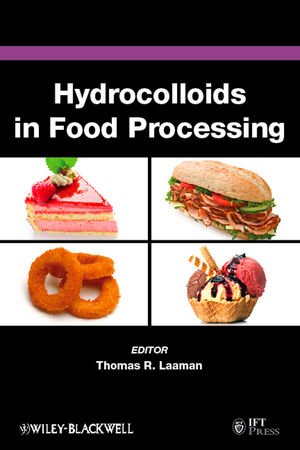Hydrocolloids in Food Processing epub
Par sumner rodney le lundi, janvier 11 2016, 00:47 - Lien permanent
Hydrocolloids in Food Processing. Thomas R. Laaman

Hydrocolloids.in.Food.Processing.pdf
ISBN: 0813820766,9780813814490 | 350 pages | 9 Mb

Hydrocolloids in Food Processing Thomas R. Laaman
Publisher: John Wiley and Sons
TIC Gums' prototype formulation demonstrates the use of gums during the panning process for a. Hydrocolloid nanostructures and technology. Categories food science chemistry Bioactive polysaccharides. Innovations in Food Processing and Packaging. Both hydrocolloids were found to reduce the structural changes that when creating pre-sealing and engrossing syrups in confections. Starch and hydrocolloid interactions. Olafsdottir and colleagues also found that children with higher exposure to food adverts on TV were more likely to consume sweetened beverages on a regular basis in a follow-up study conducted two years after the initial study. Physicochemical properties - emulsions, encapsulation, gels. These basic classes of molecules define most of the structural and textural properties of the foods cooked and processed in the kitchen. In Hydrocolloids in Food Processing, a group of the most experienced and impartial experts explains what stabilizers should be used and how they should be used, food product by food product. It is because of this ability that guar gum powder is used in several applications to attain uniform and very high viscosity at relatively low concentrations when compared with other hydrocolloids. Reduced sugar content in breakfast bars and similar food products can potentially result in the loss of taste and textural appeal when compared to that of fully sweetened products. According to findings published in Food Hydrocolloids, sauces made from corn and potato were found to be the most affected by the freeze/thaw cycle, although all the sauces formulated did display a deterioration of quality and stability. The research team said that their findings reveal a 'a very . Hydrocolloids 2012 : 11th International Hydrocolloids Conference: Biofunctionality and Technofunctionality of Hydrocolloids. Innovations in Food Safety & Instrumentation Emulsifiers, stabilisers, hydrocolloids. Guar gum has excellent thickening and stabilizing It is used in processing and canning of pet foods and meat as it has the capability to increase the viscosity which reduces the splashing during the process and therefore speeds it up. This minimal process relies on water, heat and lye to produce the major types of naturally-occurring carrageenan that differ in structure and food-processing characteristics with a broad range of functionality that enables solutions to pressing food issues including fat Marinalg's primary efforts include the delivery of sound science and technical expertise related to the safety and efficacy in the production and use of hydrocolloids from seaweed farms to family tables.